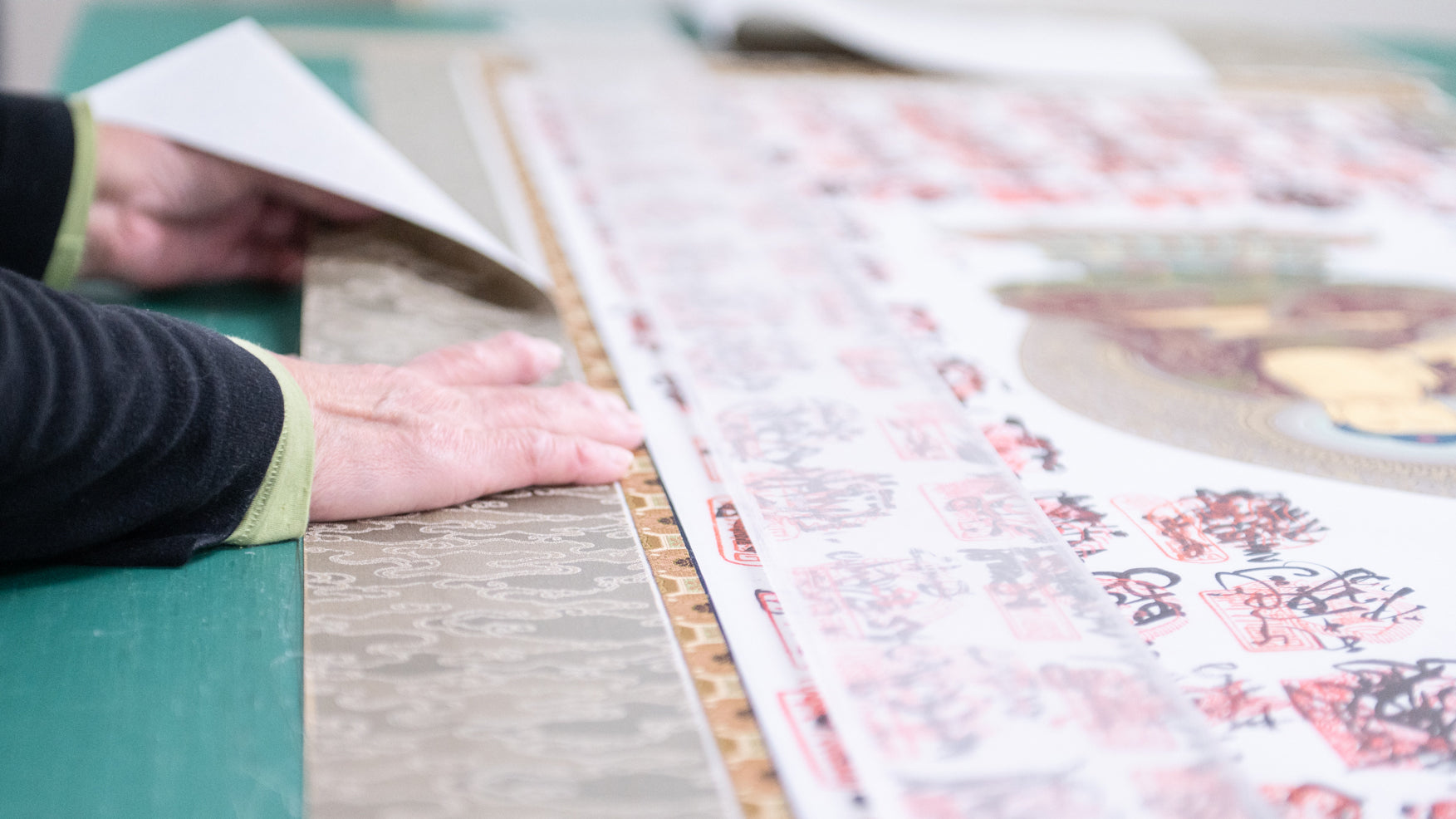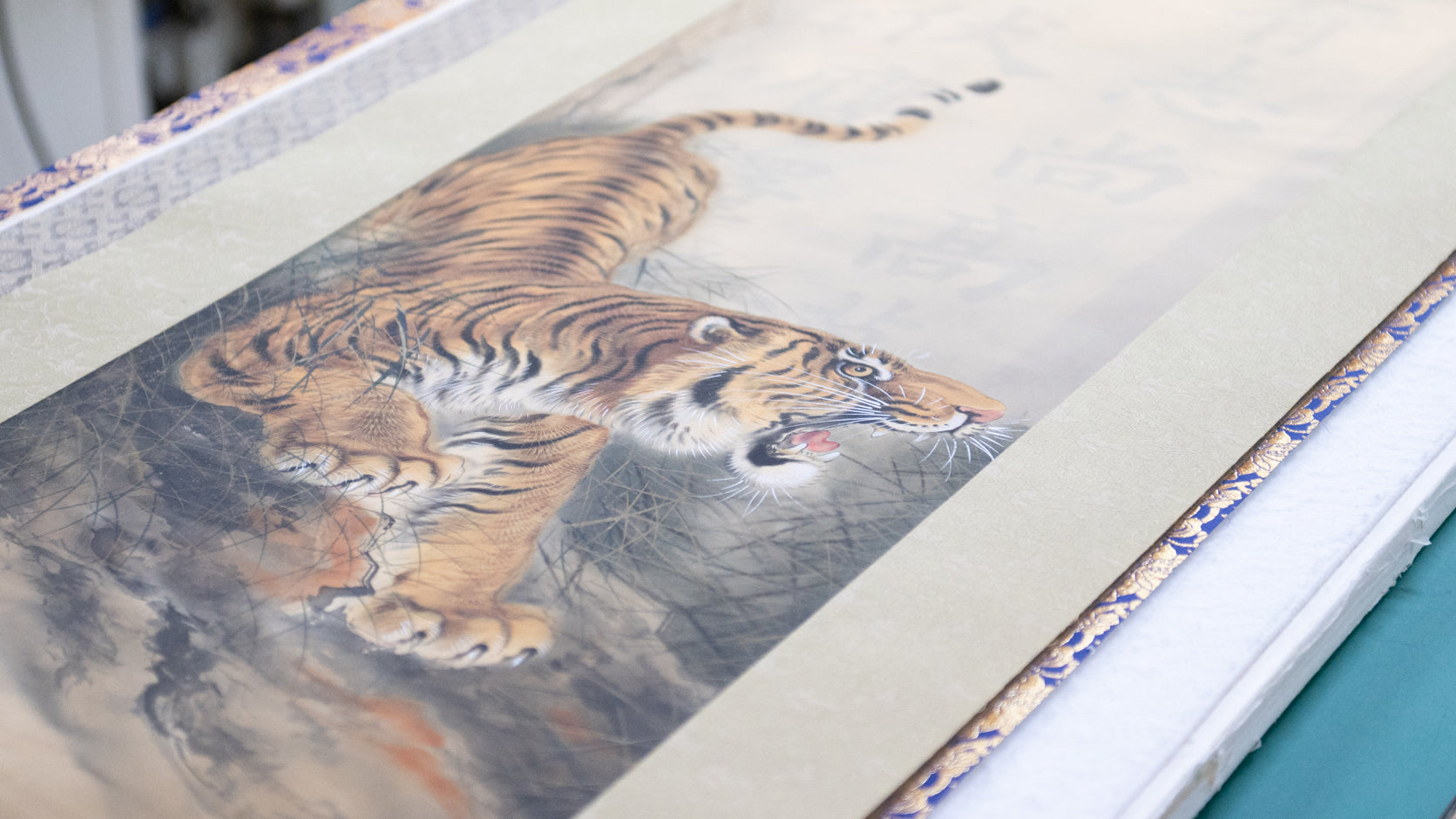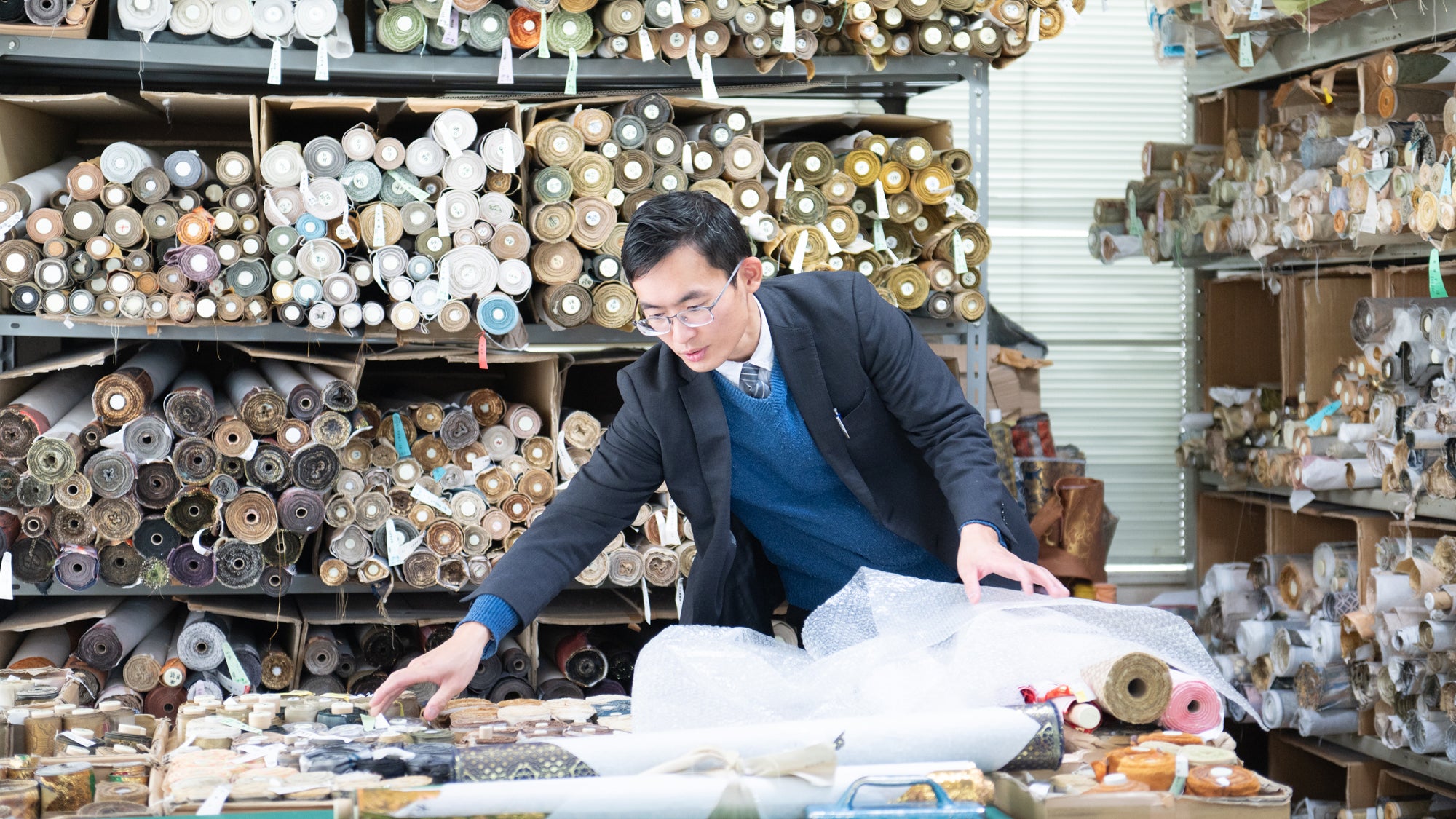This blog is the second part of the Miyabi team's visit to Kaitakudo Art.
Kaitakudo Art is a company that handles everything from the mounting, painting, to the sale of hanging scrolls.
In the first blog, we introduced Step 1 "Color Matching," Step 2 "First Backing (honshi "main work" Backing)," and Step 3 "Temporary Pasting."







